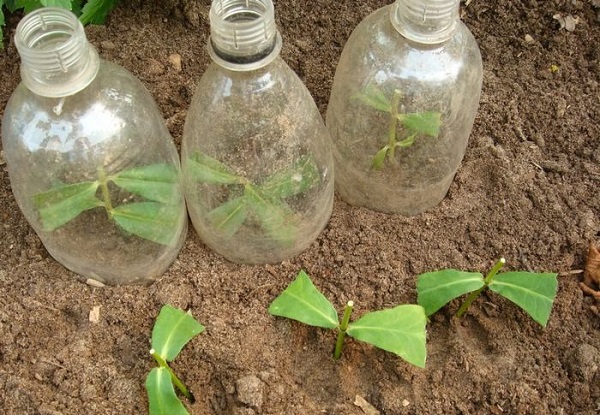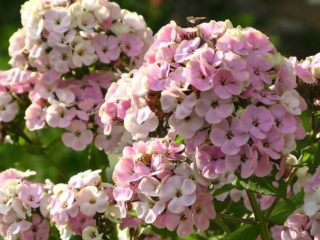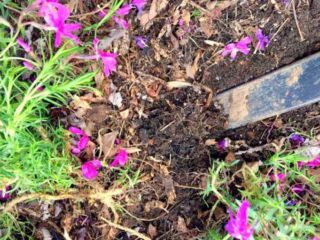Content
Phlox Star Rain is a plant that has spread throughout Europe. The flower looks great in decorative pots and on alpine slides. A riot of colors of fragrant inflorescences pleases the eye of summer residents from May to September. Culture has one important feature - it shows itself in all its glory only to those who carefully look after it.
Description of phlox Star rain
Phlox Drummond Star Rain is an annual plant of the Sinyukhov family, characterized by long flowering. The culture is a bush about 50 cm high with branching stems.
Phlox of this variety has oval, slightly pointed leaves, located opposite.
Annual phlox varieties Star Rain are sun-loving plants that do not tolerate shade.
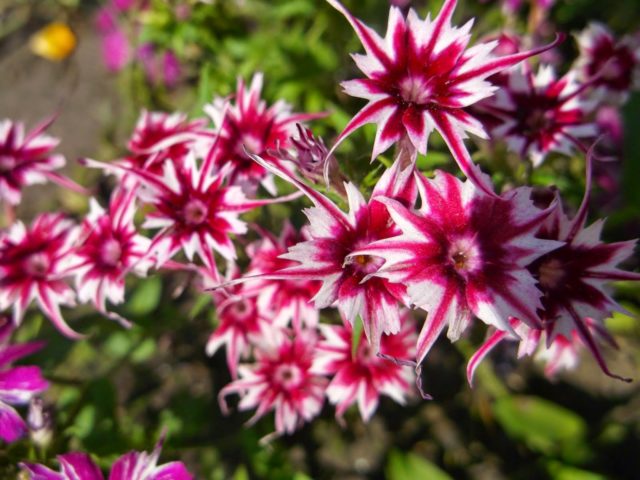
The flowers do not fade in the sun, so they are allowed to be planted in well-lit areas.
The climate of regions in which the Star Rain phlox will grow comfortably should be temperate. The culture prefers light soils. It does not tolerate overheating of the root system, so watering should be regular.
Another advantage of the Star Rain variety is its resistance to adverse weather conditions. It tolerates frost and drought very well.

Flowers of the Star Rain variety outwardly resemble stars
Flowering features
Flowering begins in June and continues until frost. At -5 ° C, the star rain dies, so it should be covered for the winter.
The racemose inflorescences collected in scutes are pink, lilac or purple. Outwardly, they resemble stars. The size of the flowers does not exceed 2 cm in diameter, but thanks to the bright corymbose inflorescences, the phlox Star Rain gives the impression of being luxuriantly blooming. In hot weather, flowering becomes abundant.
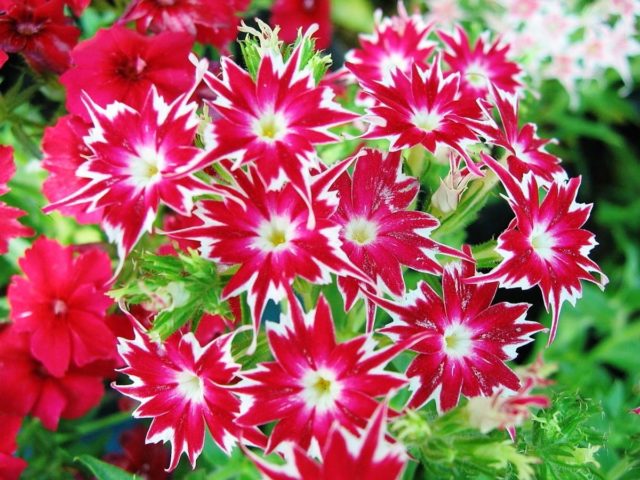
Phlox bushes tolerate drought well
Application in design
Phlox flowers of the Star Rain variety are often used in landscape design.
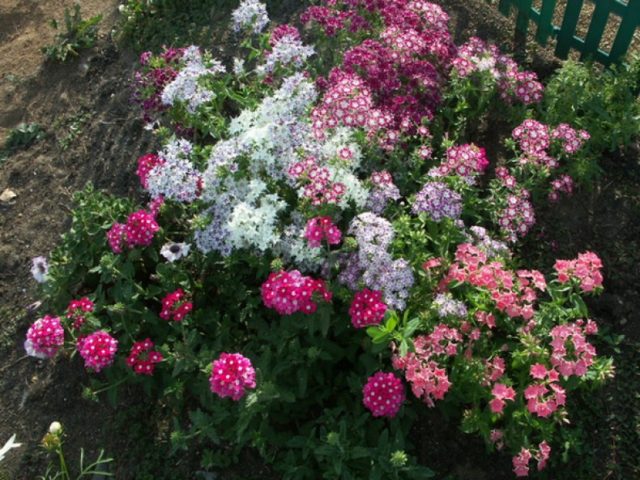
The plant looks good in both single and group planting
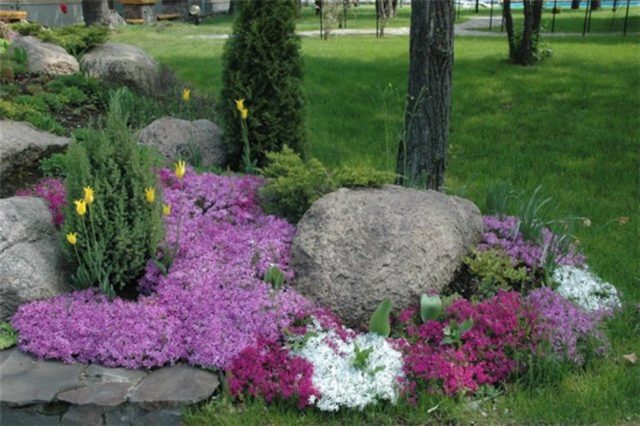
Since Star Rain grows up to 50 cm in height, it is planted next to coniferous, tall trees
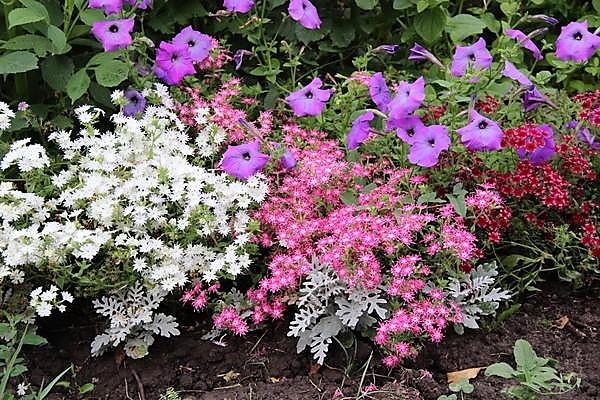
The culture also looks harmonious with bells, petunias and cereals.
When choosing neighbors for culture, gardeners should pay attention to the fact that grayish wormwood and fescue will stand out beautifully against the background of pink phlox.
Phlox Star Rain look great on alpine slides in decorative flowerpots.
Reproduction methods
There are several ways to reproduce phlox:
- By division. In early autumn or spring, a large bush is divided into several parts. This propagation method is only suitable for seedlings that are more than five years old. Divide the root with your hands or a shovel. Planting is carried out immediately so that the root system does not have time to dry out.
- Leafy cuttings. Summer time is suitable for reproduction in this way (end of June - July). A leaf with a bud is separated from the stem, and then planted in the ground. To root the plant, a container with cuttings is kept in a room, the air temperature in which is about 20 ° C.
- Stem cuttings. The breeding procedure is carried out in May. The shoots of the bush are divided into parts so that each of them has 2 nodes.
The material is planted in soil and transferred to a greenhouse.Within three weeks, the cuttings take root
- Layers. The bush intended for reproduction is covered with earth. After a while, the stems begin to grow. They are carefully cut and transplanted to the prepared place.
Breeding of the Star Rain variety is carried out using seeds. The gardener needs to inspect the bush and find lush but yellowed caps. When the flower dries up, it is cut and put in a bag. When the seeds are fully ripe, they will fall into the same bag. The gardener will have to sort them and plant them.
Growing phlox Star rain from seeds
Annual phloxes are grown in much the same way as perennials. The only difference is that the seeds are not sprinkled with earth, but pressed. The plant will begin to develop on its own and sink to the desired depth.
Recommended timing
Sowing annual Star Rain phloxes is carried out in March, to transplant them in May. It is allowed to plant seeds a little earlier, but in this case you will have to additionally illuminate the sprouts. This is not always convenient.
Gardeners advise sowing after warm weather. If frosts suddenly come, then the plant will not withstand them and will die.
Selection of containers and soil preparation
The ideal planting container for phlox is a plastic seedling container. Small drainage holes are made in it with the help of a mini-soldering iron.
For growing phlox Star Rain, a universal seedling soil mixture is suitable. It is advisable to supplement it with dolomite flour, sand or ash. To loosen the soil, a coconut briquette is added to it in a 1: 1 ratio. For seedlings to develop properly, the soil must be breathable.
Sowing seeds for seedlings
Sowing seeds for seedlings begins in early spring (mid-March). Detailed instructions for sowing seeds:
- The bottom of the container is pierced in several places to prevent stagnation of water, which is fatal for phlox.
- The planting pot is filled with soil mixture and slightly moistened with hot water.
- Seeds are spread over the entire surface of the earth and covered with foil.
- The shelter is regularly checked for condensation. If it appears, then the film is periodically opened.
The container is installed on a windowsill under the scattered sunlight. The air temperature in the room should be + 20 ... 23 ° С.
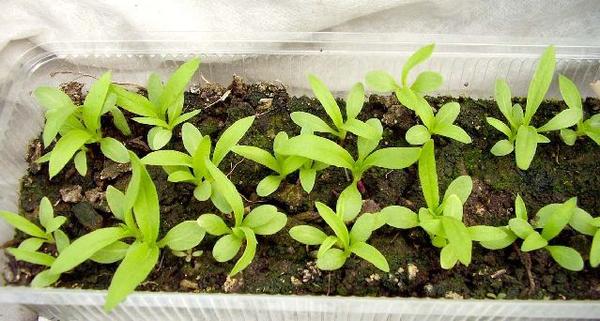
After a few weeks, the first shoots will appear.
Growing seedlings
Having planted a plant, they wait for the first shoots to appear. This usually happens after 2-3 weeks. Phlox seedlings are unpretentious and tolerate diving well. The procedure is carried out after the appearance of three full leaves. The sprout is transplanted into a pot with a substrate. In May, the seedlings are hardened, leaving the shoots next to an open window. When the sprouts get a little stronger, they are fed with mineral fertilizers before being transplanted into the ground.
Follow-up care
Gardeners say that at the end of May, you can safely plant seedlings in open ground. To do this, you need to choose a well-lit place on the site, which does not receive direct sunlight at noon.
A handful of wood ash is laid out in the prepared hole, and then a seedling is placed in it. Lightly sprinkle the plant with earth and tamp it with your hands. After that, you need to water the soil with warm water.
Follow-up care involves performing the following actions:
- Regular watering with cool water, especially on hot days.
- Two weeks after planting, the soil around the plant is loosened so that the roots can breathe.
- Fertilizing with mineral fertilizers is carried out at least 4 times per summer.
- Mulching will help to facilitate the care of the crop. A layer of peat or sawdust will prevent the soil from drying out and will also inhibit the growth of weeds.
Pests and diseases
Phloxes are practically not susceptible to infectious diseases.However, pests often damage the plant.
The most dangerous insects for a flowering culture are:
- Nematode - a worm 1 mm in size, which settles in the tissues of the plant and feeds on its juice. To get rid of pests, it is necessary to cut off the affected stems, and after regrowth of the shoots, break them and plant them in the ground under the film. In this case, the roots are treated with Piperazine, and the soil with Fitoverm.
- Slugs - pests that spoil the plant at night. They eat leaves, buds and cuttings. You can fight mucus with the help of coniferous needles scattered over the site.
- Scoops - caterpillars that eat all parts of the plant. Over time, phlox stops growing, begins to fade. Having found an ailment, it is necessary to collect all the caterpillars and treat the flowers with insecticides.
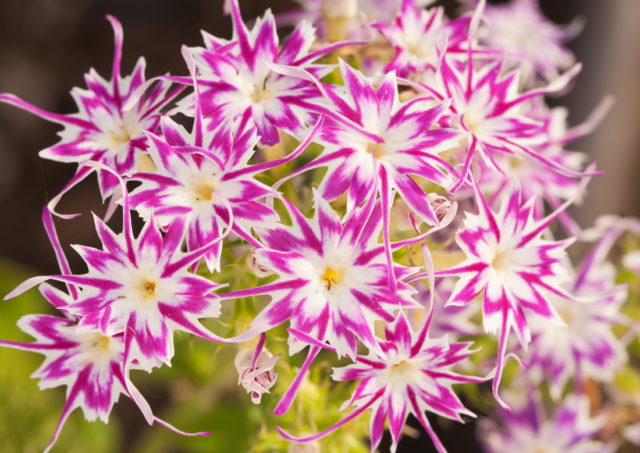
Spraying phlox Star Rain during the flowering period is prohibited.
This can be dangerous for pollinating insects.
Conclusion
Phlox Star Rain is an unpretentious plant that pleases with flowering from June to September. The culture is unpretentious in care, it tolerates drought and frost well. Growing in a sunny area, phlox achieves maximum decorative effect.
Testimonials
Evgenia Petrova, 50 years old, Astrakhan
